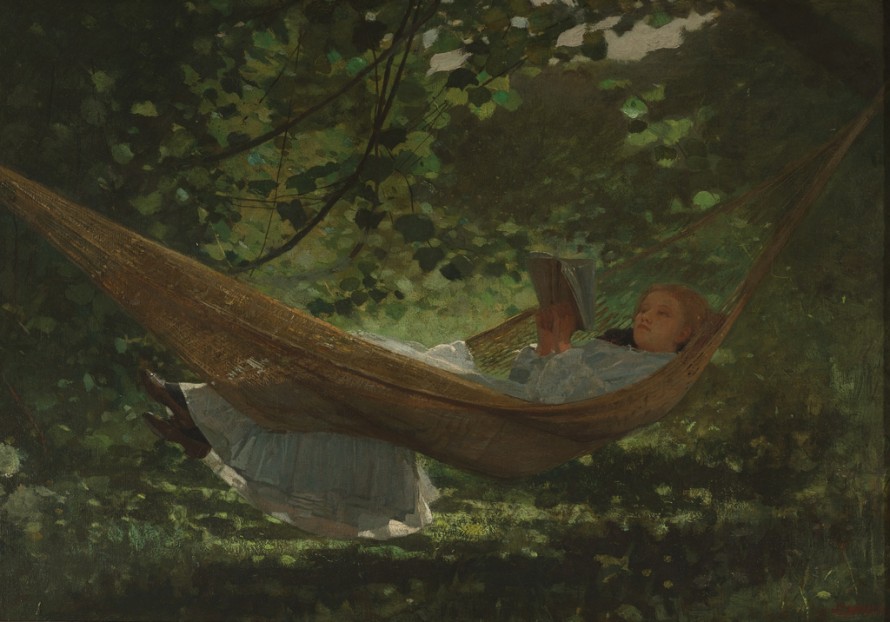Winslow Homer’s 1873 oil painting titled, Sunlight and Shadow—In the Hammock, depicts an idyllic scene of tranquil bourgeois leisure in a pastoral setting. The scene portrays a young middle-to-upper class woman, indicated by her well-maintained white dress and refined shoes, reading peacefully in a hammock. Stretching from one end of the canvas to the other, the woven hammock and its sitter appear to be floating amongst the varied green leaves and black branches. Her face is softly defined and relaxed; as her body and dangling skirt hem swing amongst light dappled trees. Critic Holland Cotter has said that Homer’s “apple scented mid-1870s images of upstate New York farms and schools…reflect a mood of national nostalgia as the country’s Centennial approached.”[1]
This painting has a special place in my heart, not only because of its impressionistic rendering of light and social symbolism, but because it was featured in Cooper Hewitt’s 2006 exhibition, Frederic Church, Winslow Homer & Thomas Moran: Tourism and the American Landscape. This was the first exhibition in which I toured as a docent for the museum, and it was an impressionable one for me in that so many of the works on display by Homer, Church and Moran were part of the museum’s original collection. From 1912-1920, Charles Savage Homer Jr., Winslow Homer’s brother, and his wife donated a remarkable collection of over 300 paintings, watercolors, and drawings by the artist, constituting the largest collection of Homer material in any museum. It is the museum’s good fortune to have this Homer painting as one of its treasures.
Rachel Brill was a volunteer docent at Cooper Hewitt, Smithsonian Design Museum. She has a Bachelor of Arts degree in Art History and Italian language from Vassar College.
[1] Cotter, Holland. “Winslow Homer: American Vistas,” Art in America, December 1996, Vol. 84, Issue 12, p. 57.
